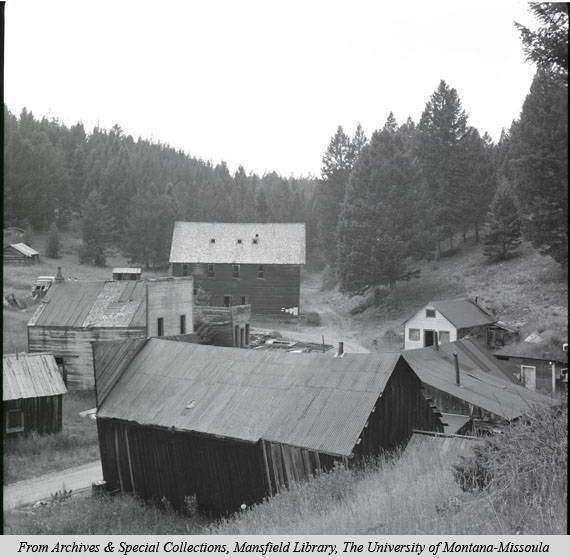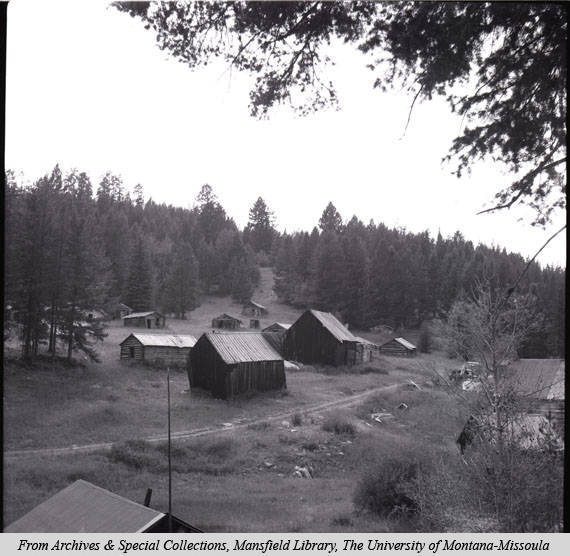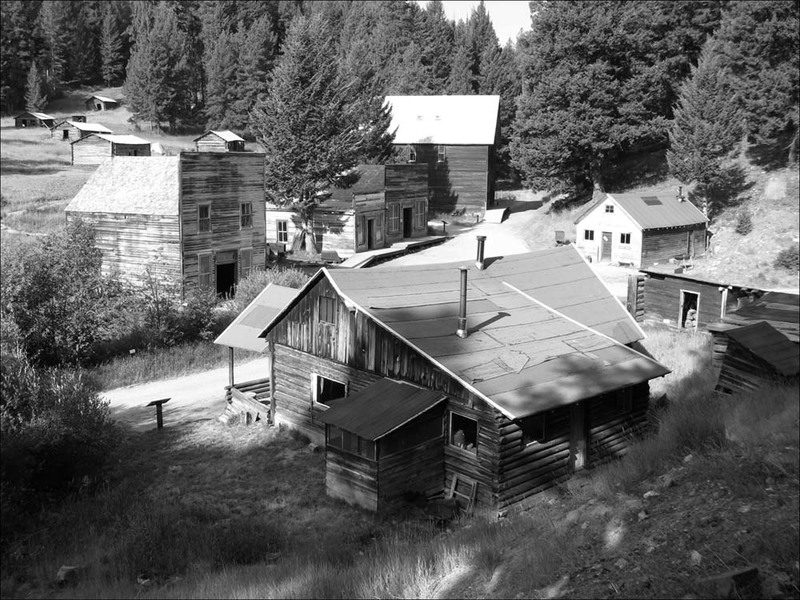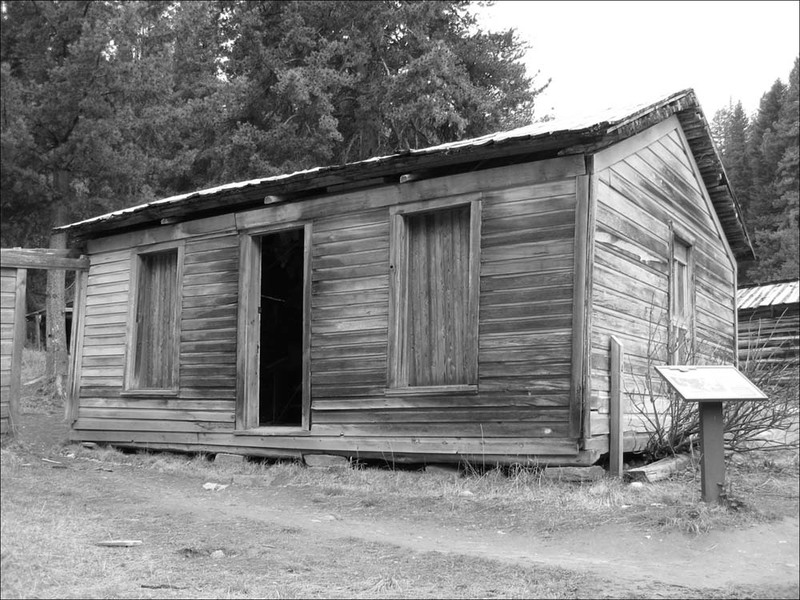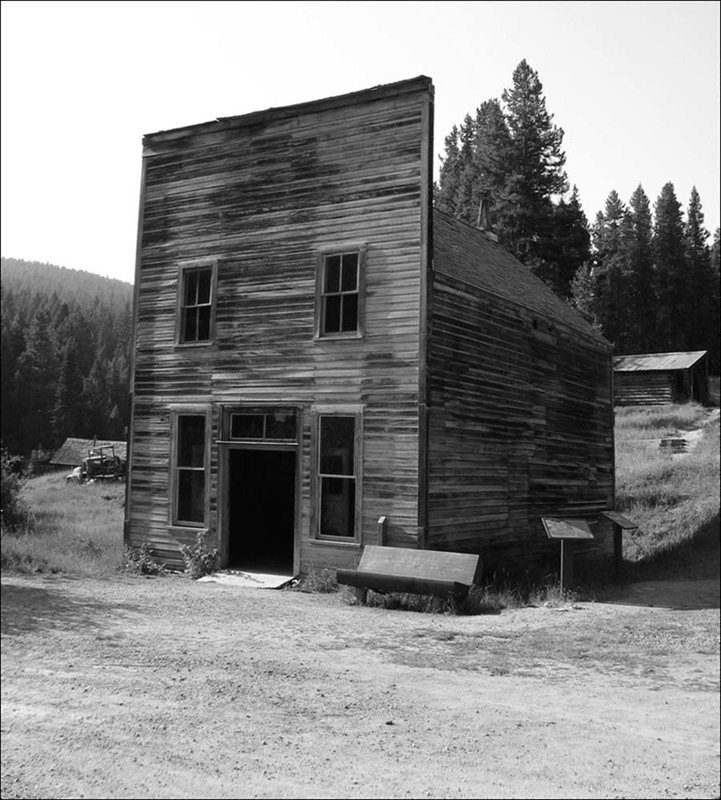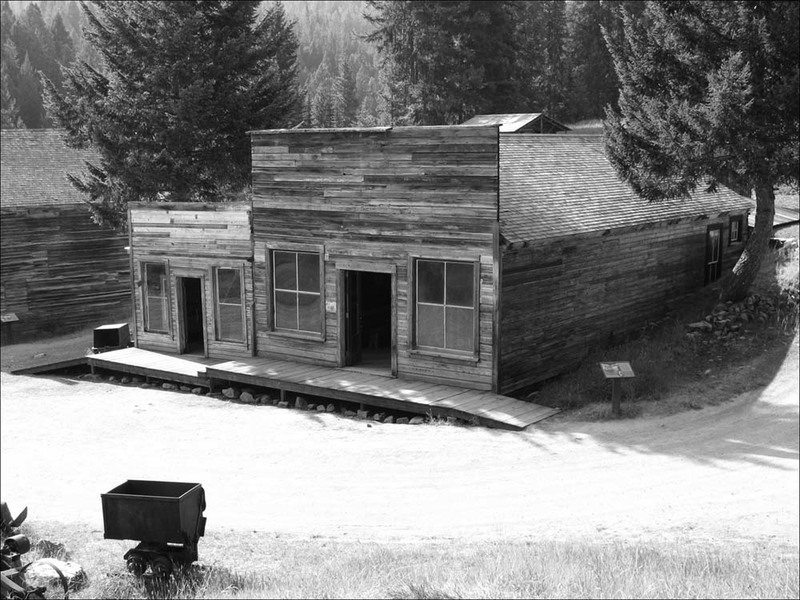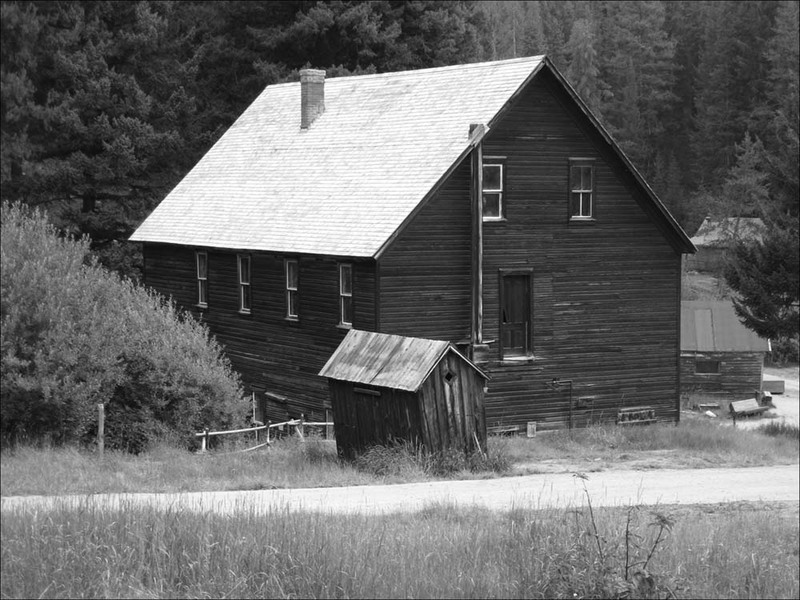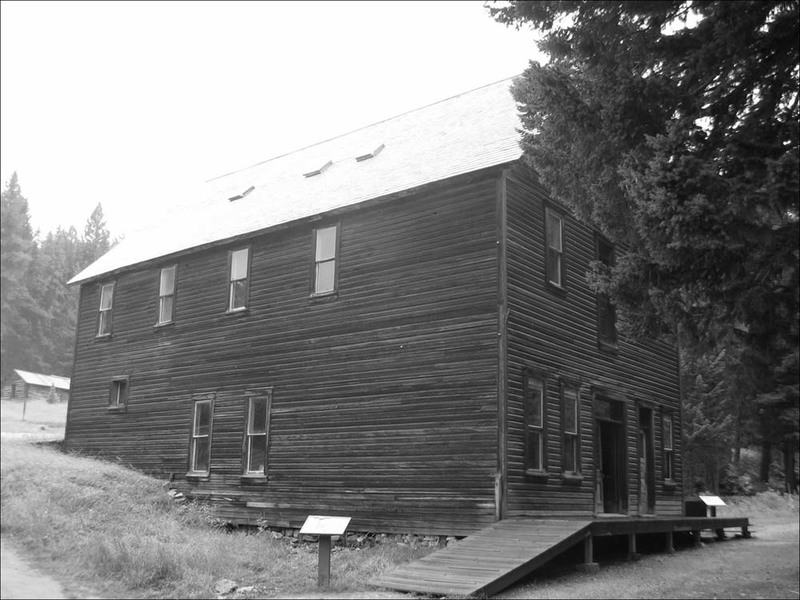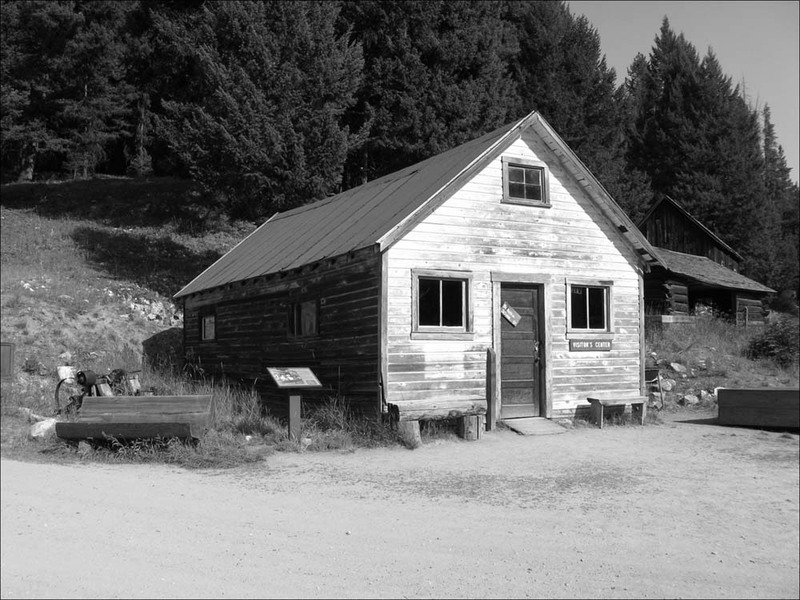Garnet Historic District
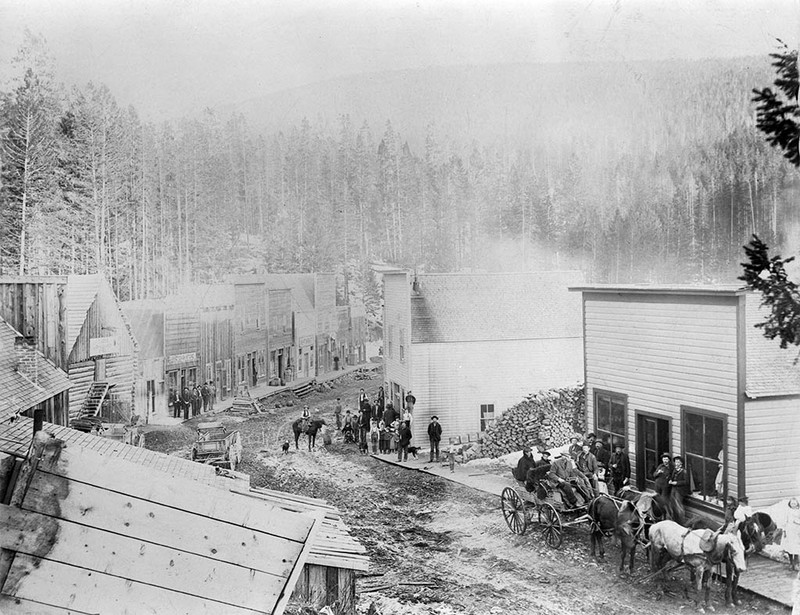
Photograph Archives, Helena, MT Creator: Unidentified photographer Date: 1899
The 1865 gold strike on Bear Creek in the Garnet Range drew prospectors from far and wide. The gold that washed down with spring runoff promised rich quartz veins, but without a road and little water for placer mining, the “mother lode” proved elusive. For thirty years, prospectors eked out a living until road construction finally allowed access to heavy equipment. Placer mining transitioned to hard rock mining. In 1895, partners Dr. Armistead Mitchell and Dr. Charles Mussigbrod developed a stamp mill at nearby First Chance Gulch. When Samuel Ritchey struck a rich vein of gold at his Nancy Hanks mine, just west of the mill in 1896, Garnet sprang to life. The town attracted more families than did Montana’s earlier mining camps. Dances, hay rides, quilting bees, and picnics provided family oriented social activities. Garnet supported numerous saloons, but its family emphasis tempered usual mining camp vices. Cordial relations between independent mine owners and the miners union contrasted with single company towns such as Butte and Philipsburg, prompting the Garnet Mining News to proclaim the town a “poor man’s paradise.” Through boom and bust, Frank A. Davey steadfastly believed in Garnet’s future. As owner of the general store, hotel, and the stage line, Davey was Garnet’s most prominent resident. His death in 1947 and the sale of his holdings in 1948 marked the beginning of Garnet as a ghost town. Today, the remaining commercial false-front and log dwellings reflect Garnet’s life span from 1895 to 1948. Since 1972, the Bureau of Land Management (BLM) has stabilized many of the town’s buildings and vigilantly oversees its historic resources.
Images

Photograph Archives, Helena, MT Creator: Unidentified photographer Date: 1899
